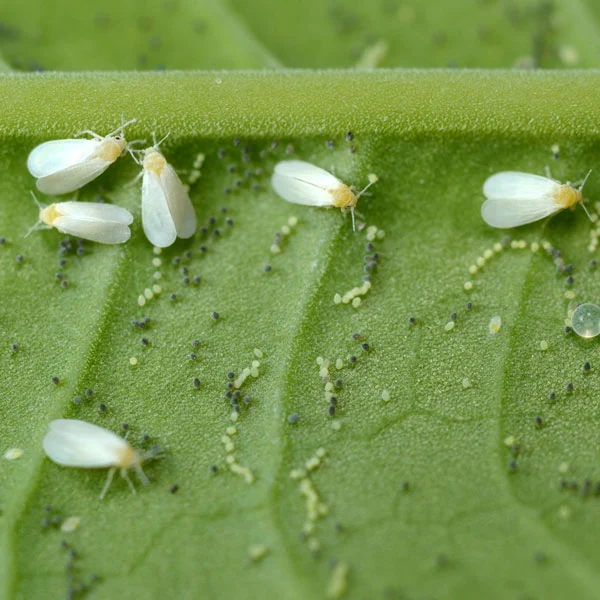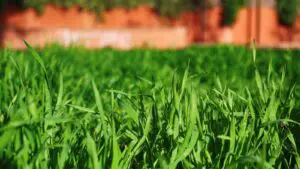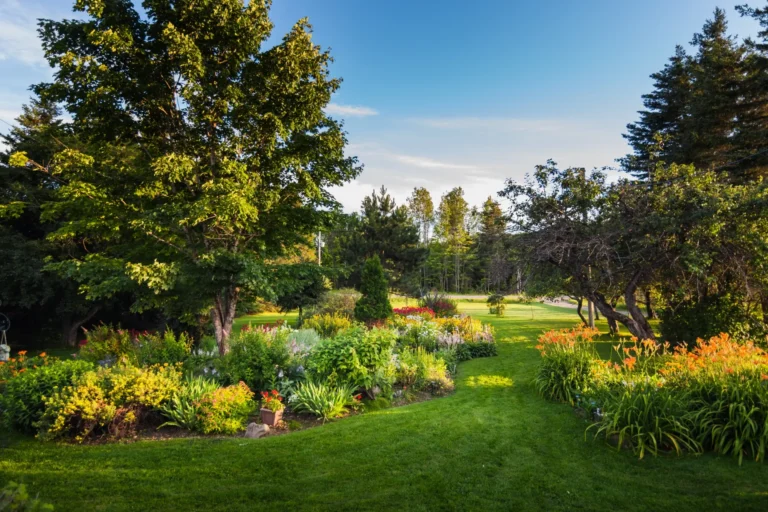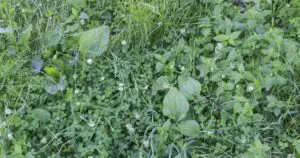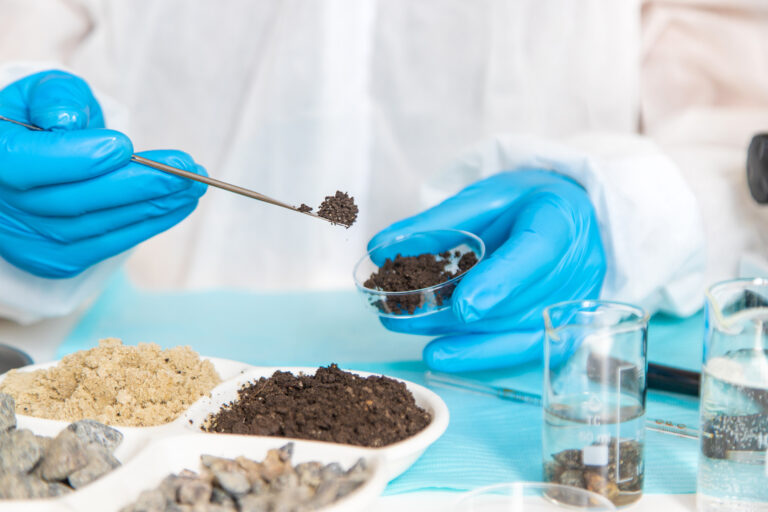8 Common Colorado Pests and How to Prevent Them:
It’s that time of year. Time for sunshine, pool trips, hiking and the slightly less favorable, bugs. No one likes pest damage in their lawn or garden, but once you’ve read through this list, you should have a good idea of what you’re up against and how to get rid of them.
The Pests:
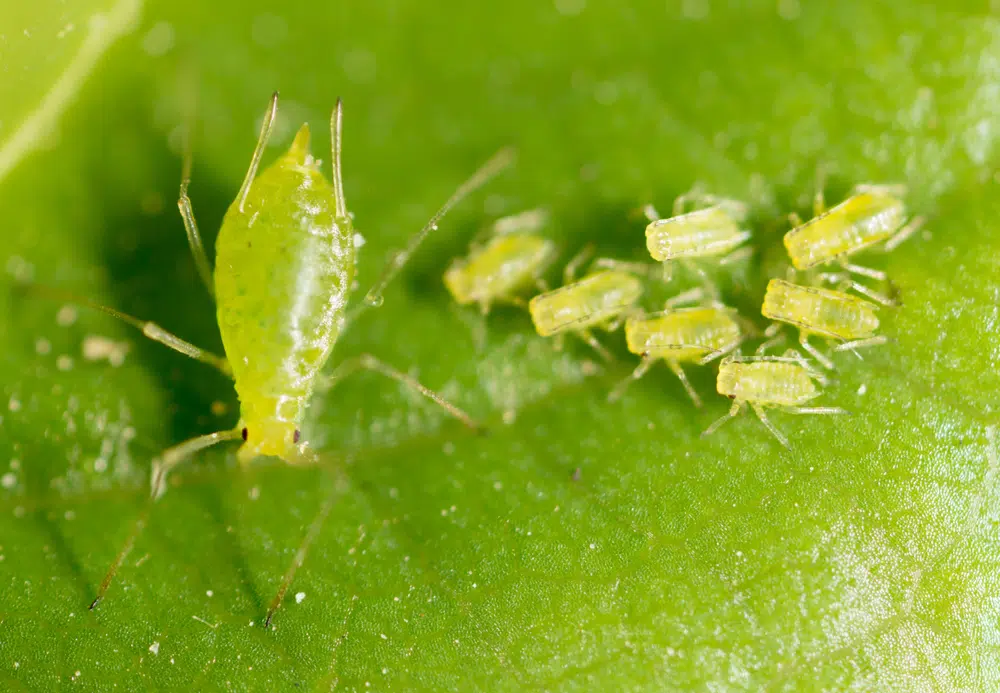
Aphids:
What they are:
Aphids are small insects that appear in a variety of colors. The best identifier of an aphid is its cornicles or tailpipes at the end of its abdomen. You can also identify an aphid feeding by their shed exoskeletons left on leaves. Long term aphid feeding can cause stunted or death shoots, limited growth, and twisted yellow leaves. They also carry different plant viruses.
How to get rid of them:
- Monitor your plant’s leaves carefully throughout the growing season.
- Use Pressurized water to spray the aphids off of leaves.
- Remove weeds that these insects enjoy such as sowthistle.
- Using Low Risk Pesticides.
- Introduce natural predators to the area such as ladybugs and their larvae
Whiteflies:
What they are:
Whiteflies are winged insects that are related to aphids. They’re often found in groups together under leaves. Whiteflies are usually introduced into your garden by the plants you bring home, so make sure you’re checking your plants carefully. With a whitefly infestation you’ll notice your plants becoming incredibly weak. Their leaves will yellow and wilt and eventually drop off the plant, eventually killing it.
How to get rid of them:
- Blast the plants with a high power watering hose to dislodge them.
- Vacuum the whiteflies off with a small handheld vacuum cleaner. Please note you should not dispose of these in your house trash can, as they will feast on your houseplants instead.
- Introduce natural predators such as ladybugs, spiders or dragonflies.
- Spray with a mixture of soap and water. The National Gardening Association suggests one squirt of soap to a gallon of water.
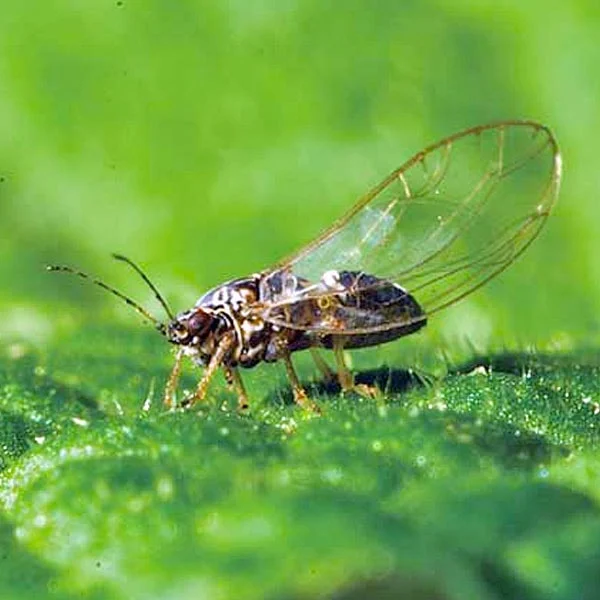
Psyllids:
What they are:
Not so affectionately dubbed as “plant lice”, psyllids are sap sucking insects that feed on one type of plant and sometimes related species. Psyllids also produce a sweet substance that attracts ants and mold as they eat. These pests aren’t always harmful, and in small quantities will likely have little to no effect on your garden. A problem occurs when you notice distorted terminals, less growth, and even discoloration. You should be especially cautious of these plant lice if you grow tomatoes, as they are highly affected by psyllids.
How to get rid of them:
- Broad Spectrum Insecticides.
- Soap and Water Spray.
- Spraying Neem Oil.
- Chemical Sprays for Psyllids
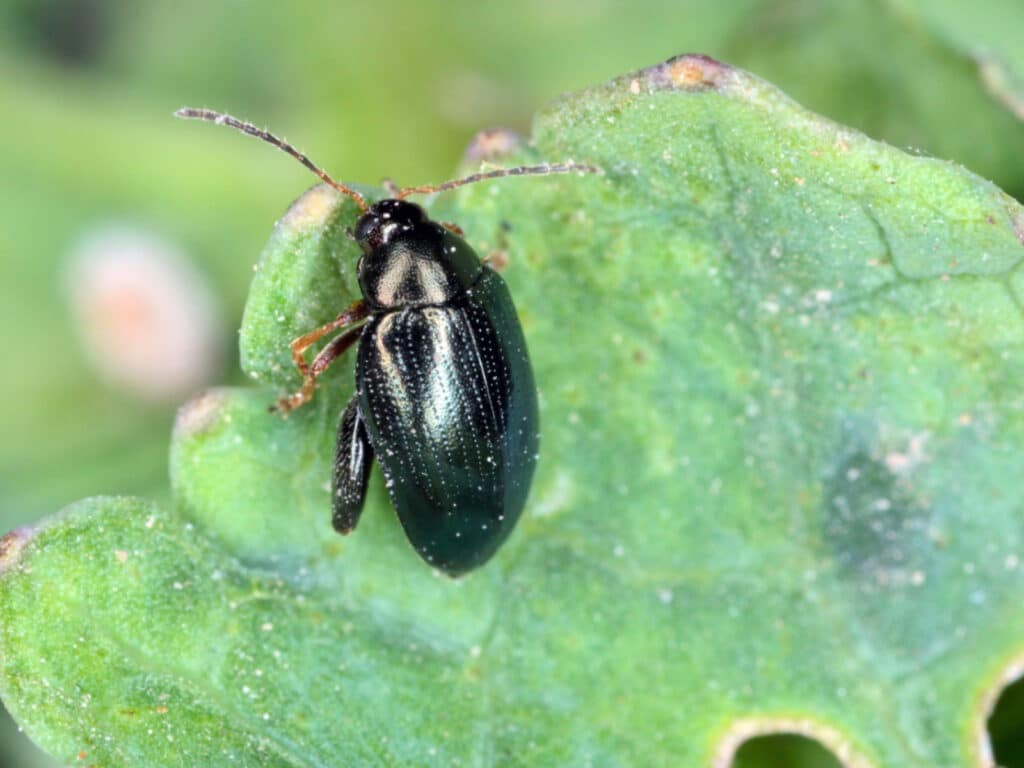
Flea Beetles:
What they are:
There are multiple species of flea beetles, each feeding on a different type of plant. They’re small, and are at biggest 1/4in long. They have varying colors but are usually found in black, bronze, blue, brown or gray. These beetles survive through the long winter and become active in spring to lay eggs. A good sign you have flea beetles is holes in your leaves and stems, these holes are rounded but irregular and smaller than ⅛ inch.
How to get rid of them:
- Remove crop debris and weeds to limit food sources.
- Plant a high value sacrificial plant and allow the beetles to feed, then spray them with insecticide.
- Use natural predators for flea beetles such as lacewing larvae.
- Dust leaves with talcum powder.
- Spray the beetles with soapy water.
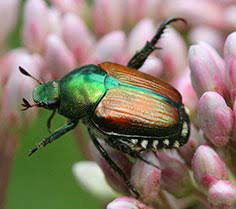
Japanese Beetles:
What they are:
Japanese beetles are an invasive species monitored by many Departments of Agriculture across the country. Their grubs eat grass roots, causing your lawn to brown and die. If that wasn’t bad enough, the adults eat 300 species of plants. These beetles are 1/2in long with a metallic green body and copper wings. These insects can do serious damage to trees, shrubs, flowers, vegetables and fruits. You can tell you have japanese beetles by the way your plants appear. Their feeding is characterized by feeding on the leaf in between veins, giving them a lace-like appearance. You can recognize their grubs by large deaf patches of grass and your grass being able to be moved like a carpet, as they have their roots severed.
How to get rid of them:
- Handpick beetles into a bucket of soap water.
- Cover plants in netting to protect them, this is not a feasible solution if they need pollination.
- Allow natural predators such as wasps to help minimize population.
- Apply parasitic nematodes to your grass to minimize grubs.
- Use trichlorfon to kill the grubs, however this can also be harmful to bees.
- Water your lawn less during beetle season.
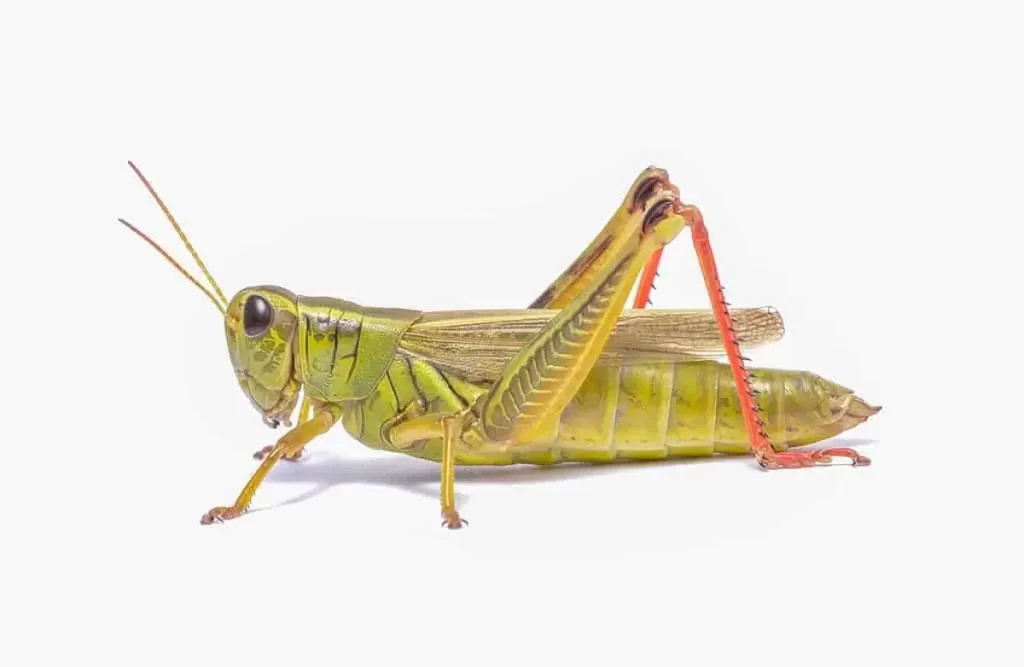
Grasshoppers:
What they are:
Grasshoppers are a green or brown insect with large and powerful hind legs. Well known for jumping around with incredible height for their size, many do not know how harmful they can be to your plants. They feed on anything from weeds to crops and their population changes every year. You can identify grasshopper damage by the larger, round and jagged holes between the veins of your leaves.
How to get rid of them:
- Use natural botanical enemies such as Nosema locustae or Entomophthora grylli.
- Use natural predators such as bee flies, chickens and ground beetles.
- Pull and control weeds in the area to minimize places for grasshoppers to lay eggs and to reduce food sources.
- Apply garlic spray to deter the insects.
- Dust leaves with flour to starve the pests.
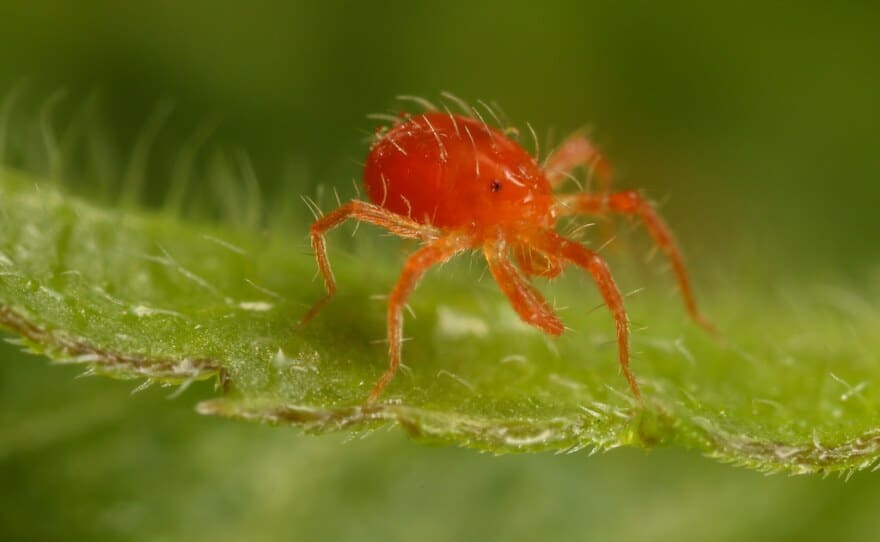
Spider-Mites:
What they are:
Spider mites are more similar to spiders than insects and are classified as an arachnid. They’re tiny (around 1/50in long) and a red brown color as an adult. These creatures live on the underside of leaves in large groups. This enables them to feed on leaf tissue through tiny puncturing motions. With continuous feeding plants will start to yellow, dry up and leaves will begin to fall off. The first sign of an infestation is light dots on the top of leaves and/or thin webbing around leaves. Once you see that, you should strike before it gets even worse.
How to get rid of them:
- Prune off any infected leaves and stems, or pull entire plants if necessary.
- Spray leaves with a strong jet of water.
- Support natural predators such as ladybugs and lacewing.
- Spray neem oil on the plants.
- Clean your leaves, dust attracts mites.
- Use insecticide.
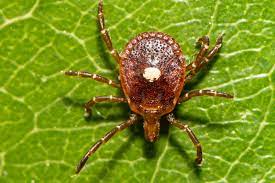
Ticks:
What they are:
Ticks are more harmful to you than your garden, these parasitic arachnids can cause serious health issues. These include lyme disease, tick paralysis, Borrelia miyamotoi Disease and many, many more. Protecting yourself from ticks while gardening or outside in general is very important for you and your family, as well as your furry friends.
Prevention For Humans:
- Treat Clothing with 0.5% permethrin.
- Use EPA Registered insect repellents.
- Check your clothing and body after being outside.
- Tuck Pant legs into socks.
- If you do happen to find a tick, use the CDC’s tick removal guidelines
Prevention For Animals:
- Check your pets regularly.
- Reduce Tick habitat in your yard.
- Buy Flea and Tick collars or medications.
Conclusion
No one likes pests ruining their summer, and if you’d rather not take time away from your summer vacation to chase mites down. Check out our Lawn Care services to help prevent the environment these pests love.


